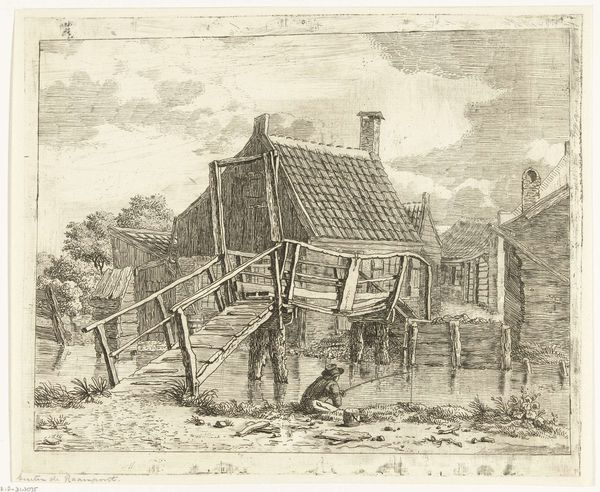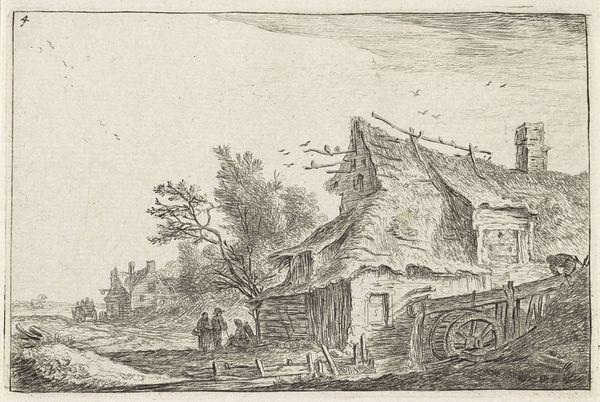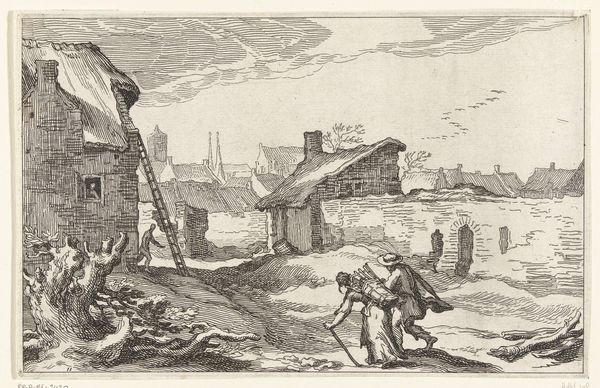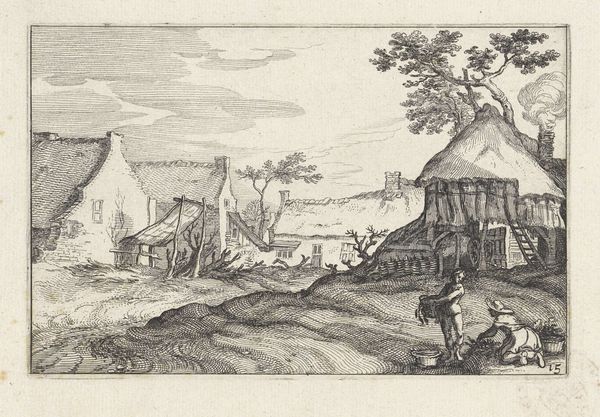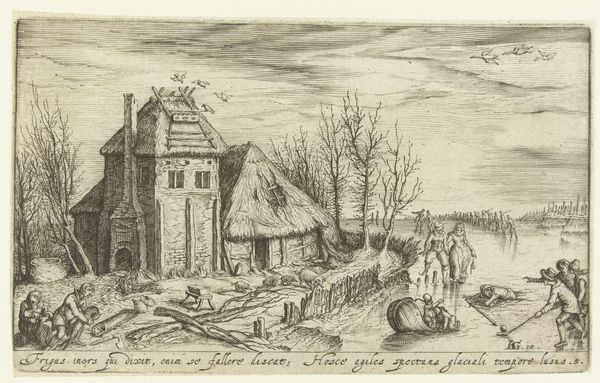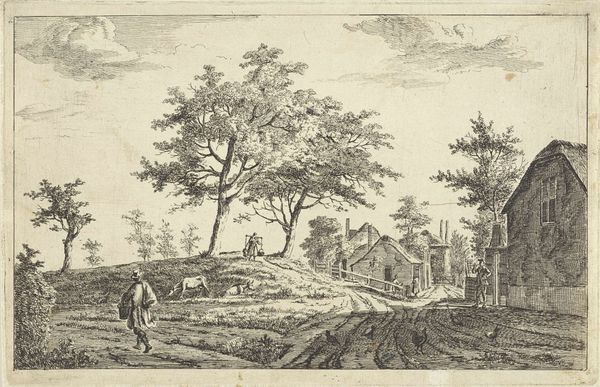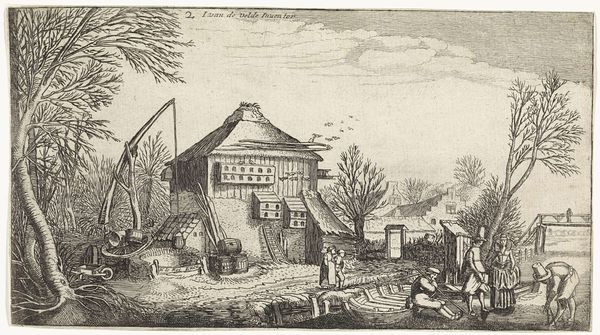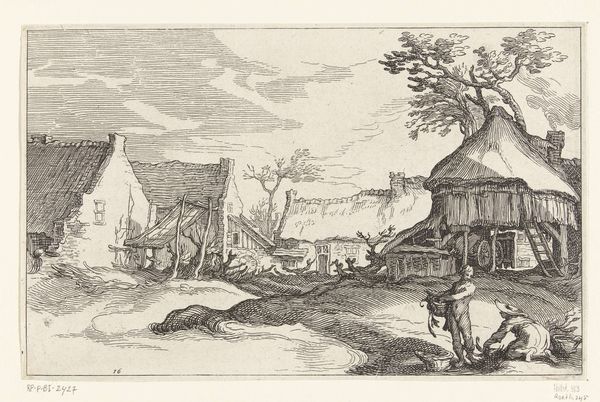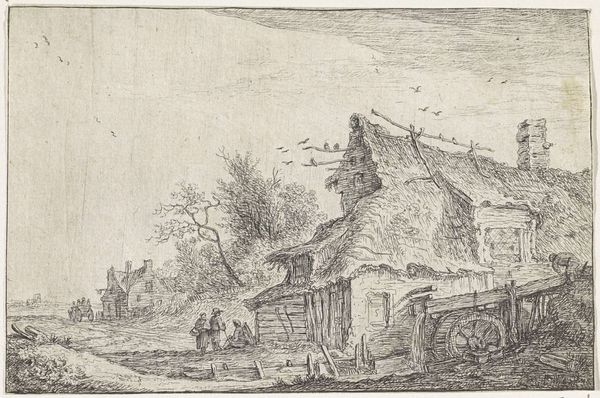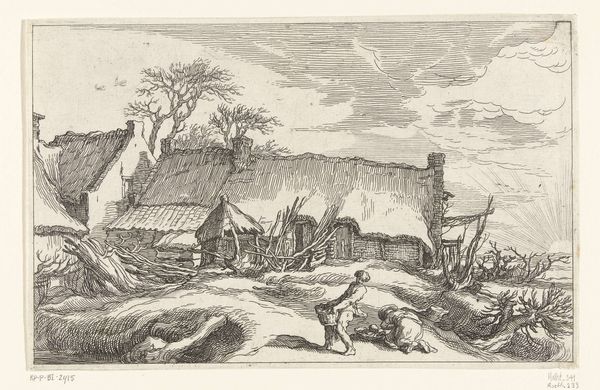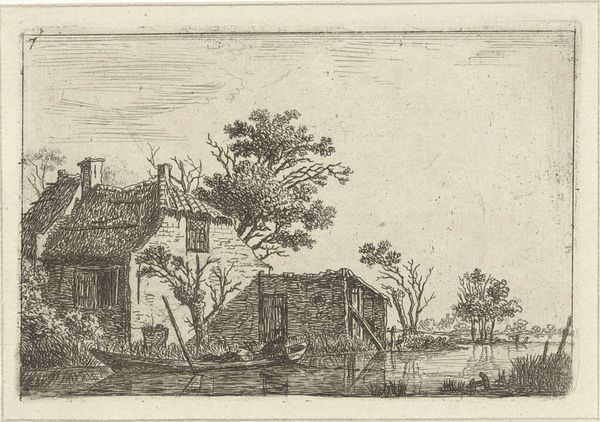
drawing, paper, ink
#
drawing
#
mechanical pen drawing
#
pen illustration
#
pen sketch
#
landscape
#
paper
#
personal sketchbook
#
ink
#
ink drawing experimentation
#
pen-ink sketch
#
pen work
#
sketchbook drawing
#
genre-painting
#
storyboard and sketchbook work
#
sketchbook art
#
realism
Dimensions: height 90 mm, width 132 mm
Copyright: Rijks Museum: Open Domain
Curator: Welcome. Here we have "Houten brug", or "Wooden Bridge", created sometime between 1810 and 1850, artist Gerrit Lamberts, currently held in the Rijksmuseum collection. It is rendered in ink on paper. Editor: Immediately, I feel like I'm peering into a private journal, some kind of beautifully chaotic field study. There's such rawness to the pen strokes! What strikes you first? Curator: It's precisely that sense of immediacy that I find intriguing. Consider how prints and drawings were valued within collecting circles. Were they viewed as complete works in their own right, or rather preliminary sketches related to the evolution of another project? It makes us question the social positioning of these 'lesser' art objects, doesn't it? Editor: Definitely makes you wonder what Lamberts was thinking. Were they trying to capture the utilitarian simplicity of everyday rural life, the interaction between people and landscape? It feels more emotional than observational, though. Like remembering a moment more than recording one. Curator: Exactly. Genre painting was certainly gaining popularity. Yet it is hard to ignore how these drawings also became entangled with broader socio-economic shifts as well. How, for instance, did burgeoning markets impact the production and appreciation of works on paper? These were increasingly viewed as commodities, particularly within expanding art markets. Editor: See, now you make me think about art as *object* versus art as… feeling! It is just fascinating how such rudimentary lines manage to capture movement; the boy playing with the dog, the texture of the weathered wood of the bridge... the dog! What story are the lines trying to suggest here? Curator: Well, it raises interesting questions, and challenges our traditional art historical accounts, to really consider what kinds of narratives have historically been prioritized in institutions. I wonder how different this piece would be interpreted if, say, it ended up in a very different kind of collection. Editor: Food for thought. Thank you. I will look at sketches differently from now on. Curator: And I will keep thinking of markets. Thank you, indeed.
Comments
No comments
Be the first to comment and join the conversation on the ultimate creative platform.
